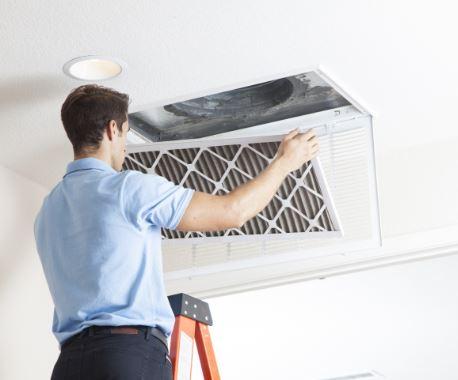It’s a sweltering day, and you crank up the AC, expecting a blast of cool air. But instead, your air conditioner sputters out lukewarm air, leaving you hot and frustrated. Don’t fret! Several common culprits could be behind your AC’s lack of coolness. Let’s explore some possible reasons and solutions to get your home comfortable again:
Clogged Air Filter
One of the most common reasons your air conditioner might not be blowing cold air is a clogged air filter. The filter’s job is to trap dust and debris, preventing them from circulating through your home. Over time, the filter can become clogged, restricting airflow and making it difficult for the AC to cool the air effectively.
Solution: Check your air filter monthly and clean or replace it according to the manufacturer’s instructions. Most filters recommend replacement every 1-3 months, depending on usage and dust levels. Regular maintenance of your filter can ensure optimal airflow and cooling efficiency.
Blocked Air Vents
Blocked air vents can also restrict airflow, much like a clogged filter. Furniture, rugs, or even dirty registers can prevent cool air from reaching the room.
Solution: Ensure there are no obstructions around your air vents. Regularly clean the vent covers to remove dust buildup. Keeping the vents clear allows for unobstructed airflow, improving the efficiency of your cooling system.
Low Refrigerant Levels
Refrigerant is the lifeblood of your AC system, responsible for absorbing heat from the air indoors and releasing it outdoors. Low refrigerant levels can significantly reduce your AC’s cooling capacity, often due to leaks.
Solution: Adding refrigerant is a job for a qualified HVAC technician. If you suspect a refrigerant leak, don’t attempt to fix it yourself. Call an HVAC professional for diagnosis and repair. They will ensure the correct amount of refrigerant is added and address any leaks.
Frozen Coils
If your air conditioner’s evaporator coil (the indoor coil) becomes too cold, it can develop ice buildup. This ice buildup further restricts airflow and prevents the AC from cooling properly. Clogged filters, low refrigerant levels, or even a failing fan can contribute to frozen coils.
Solution: Turn off your AC and let the ice melt naturally. Once thawed, troubleshoot the underlying cause (likely a dirty filter or low refrigerant). If the problem persists, call an HVAC technician. They can diagnose and fix any deeper issues causing the coils to freeze.
Thermostat Issues
An incorrect thermostat setting is an easy explanation to overlook. Make sure your thermostat is set to “cool” and to a temperature lower than the current room temperature.
Solution: Double-check your thermostat settings and ensure they’re programmed correctly. If your thermostat is malfunctioning, it might be time to replace it or call a professional for further inspection.
Power Issues
A breaker trip or blown fuse could be preventing your AC from running altogether.
Solution: Check your circuit breaker panel and see if the AC breaker has tripped. Reset it if necessary. If the breaker trips again, consult an electrician. Electrical issues can sometimes indicate more significant problems that need professional attention.
When to Call a Professional
If none of these solutions solve your AC woes, it’s time to call in a professional HVAC technician. They can diagnose the problem and recommend the best course of action, whether it’s repair or replacement. HVAC Repair professionals have the expertise and tools to address complex issues safely and effectively.
Preventive Maintenance
Remember, preventive maintenance is key to keeping your AC running smoothly. Regular cleaning and professional checkups can help identify minor issues before they snowball into major problems. Schedule annual maintenance with an HVAC technician to inspect and tune up your system. With a little effort, you can ensure your air conditioner keeps you cool and comfortable all summer long.
By taking proactive steps and understanding the common issues that can affect your air conditioner’s performance, you can avoid the discomfort of a malfunctioning AC unit and enjoy a cool, refreshing indoor environment even on the hottest days.

